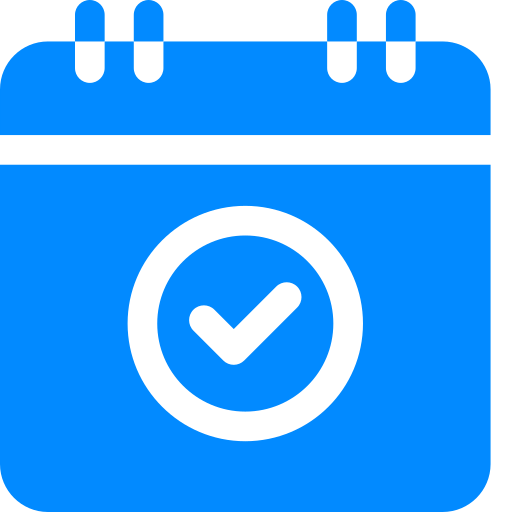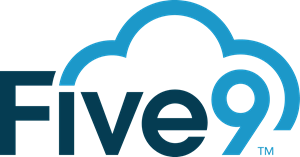The Essential Guide to Lead Follow Up: 6 key insights from sales experts

Effectively following up with leads is a foundational component of any successful sales strategy. Even the best marketing campaign imaginable will fall flat if it’s not backed up with a solid lead follow-up strategy.
There are plenty of nuances involved in following up with leads, like timing, communication methods, and segmentation. Understanding these nuances can drastically boost conversion rates and retention.
Failing to navigate these subtleties can result in coming off as desperate, pushy, or just plain annoying — and scare away the lead. Enabling your sales teams with the right tools and training to avoid these pitfalls is critical for business success.
Additionally, approximately half of all leads decide on the vendor that replies first. You don’t only need to manage the different nuances involved in communicating with a lead to move them towards a sale; you need to contact them immediately after they show interest.
So, let’s dive into the world of following up with leads the right way, avoiding coming off the wrong way and helping your teams close more sales.
The Importance of Speed to Lead

“Urgency. If there's ever a time to use time equals money — it's responding to a lead, whether inbound or their initial reply to your outbound effort.” - Terry Ford, SVP of Sales at Bead Pay
In the world of sales, timing is everything, regardless of industry. Speed to lead is the responsiveness of your initial contact with a lead after an inquiry, like filling out an opt-in form. As a general rule of thumb, the faster you reach out to a lead the first time, the better odds you have at converting them into a customer.
Why? Potential customers or clients are most engaged and interested right after they’ve made an inquiry, whether that’s a social media DM or lead capture form on your site. Delaying your responses means giving them time to lose interest in your company and move on to competitors.
It’s clear that you need a strategy in place that prioritizes rapid yet meaningful follow-ups as soon as possible to help close sales. Develop strategies and adopt solutions that allow sales teams to reach out to leads quickly while still making it a meaningful message.
Enhancing your speed to lead can be done with automated platforms that provide tailored customization and even interaction within minutes of their initial inquiry. Additionally, make sure your sales teams are alerted when a new lead comes in so they can reach out as quickly as possible.
Segmenting Leads for Follow Up

Not every lead is the same as every other lead. Building effective follow-up strategies relies on having a defined segmentation strategy. Segmenting your leads allows your teams to cater follow-ups and overall sales strategies based on the lead segment, increasing the likelihood of conversion.
So, let's explore several common segmentation methods to consider or combine.
Engagement Level
A common way to segment leads is based on their level of engagement, which is considered indicative of their readiness to make a purchase. Create at least three categories that will move through:
- Cold: The first level of engagement is immediately after they’ve become a lead and can extend to after the first follow-up or two; you can define the criteria. A cold lead isn’t considered ready to become a customer, and the goal is to move them to warm.
- Warm: A warm lead has shown interest, had a few meaningful follow-ups and responses, and is dipping their toes in the pool. While it can be tempting to go for the sale, it’s wise to wait until they’re closer to wanting to dive in.
- Hot: The final category is right before they convert; they’re motivated, excited, and ready to become a client or customer, but they might have a few more questions first. Leads can still be chased away at this stage, but they’ve already been engaged with enough to be more likely to become a customer.
Leads will start as cold and, in an ideal scenario, move their way to hot, then become customers. This method of segmentation helps sales teams gauge their interactions with leads based on their engagement level. For example, pushing for the sale with a cold lead might scare them away, while those same tactics with a hot lead may work wonders.
Demographic Segmentation
This type of segmentation is primarily used for marketing campaigns, but it can be helpful for lead segmentation as well. Demographic segmentation calls for segmenting leads based on the following:
- Age
- Gender
- Income
- Occupation
- Location
This information can help provide more personalized communication. However, it’s wise to combine demographic segmentation with another method of segmentation to help move leads through the conversion funnel better.
Behavioral Segmentation
This segmentation method analyzes how leads interact with your brand, including everything from email opens to website visits. Analyzing leads with this method goes far in determining which channels to use for communicating, interest levels in specific products or services, and other actionable information to help convert them into customers.
Leveraging behavioral segmentation goes beyond which lead capture form they used to show interest, making it crucial to have the right tools in place to track the different actions a lead has taken.
Source Segmentation
Source segmentation is similar to behavioral segmentation but focuses solely on where the lead originated from. You may have multiple lead generation methods, so source segmentation focuses on whether they came from social media, a referral, a website form, or any other method.
Understanding the source of leads is important as it determines how you follow up with them. However, it’s typically a good idea to combine source segmentation with another method to give sales teams more information to act on when deciding how to approach each message, email, or call.
Following Up with Cold Leads
“Follow-up with cold leads is the key. I would recommend: First sequence, 4 emails at least. No answer? Reactivation email, 3 weeks after the last one. No answer? Quarterly newsletter. A cold lead should always receive a message at least every 6 months!” - Nathan Rouquet, Head of Sales at Get Response
A cold lead has shown minimal interest and has likely not interacted with your brand much more than becoming a lead. The goal with cold leads is to re-engage with them without being intrusive or otherwise making a bad impression. A few strategies to consider when following up with cold leads are:
- Value-driven content: Share educational and informative content that speaks to likely pain points, demonstrates the value your product or service offers, and showcases how you solve their pain points.
- Special offers: A limited-time discount or special offer is a tried and true way to engage cold leads and help motivate them to take the next step. Even though sales and discounts are nothing new, they’re still highly effective — everyone wants a good deal.
- Re-engagement campaigns: Develop email or SMS campaigns specifically focusing on helping leads that have gone cold after being warm. It takes a nuanced approach, but re-engagement campaigns can help generate revenue from leads that may have slightly faded away.
The goal of any follow ups with cold leads is to warm them up, move them to hot, and close the sale. Keep this in mind when setting up the automated or manual methods of reaching out to them, as being too pushy can push them away entirely.
Following Up with Warm Leads
“It’s super clear, my main advice for warm leads is: regularity + personalization” - Michael Pacheco, Director of Sales at Trint
Warm leads have shown interest in your brand but haven’t converted into customers yet. Depending on how you define it, a warm lead might be after the first contact or based on information given during their lead generation form.
Taking a more direct approach compared to cold leads is generally advisable. Stay in contact with them, personalize your communications, and answer every question with detailed answers. A few ways to help follow up and convert warm leads are:
- Timely followup: Schedule each follow-up at strategic intervals to make sure your product or service remains top of mind as they make their purchase decision. However, be careful not to be overwhelming, as that can motivate them to leave entirely.
- Address all objections: Typically, the reason a warm lead hasn’t converted is because they still have objections regarding what you’re offering or the asking price. Hone in on these objections and address them to help overcome them entirely.
- Conduct demos: Product demos are usually necessary for any digital service as it gives leads a visual and possibly hands-on experience with the product. Even physical products may benefit from demos, which can be done in person or remotely, to also help leads make their purchase decisions.
Even though warm leads are closer to converting than cold leads, it takes a similar nuance to balance moving them through the conversion process and coming off as desperate or annoying. Make sure sales teams have the right tools to help them in this process.
Creating a Follow Up Schedule

“I encourage our sales team to respond or follow up with a lead within 24 hours. Otherwise, you might as well hang a closed sign on your door.” - Terry Ford
One study found that 80% of leads require 5 calls after the first meeting, which doesn’t even include the contacts necessary to set the first meeting. While the specific figures will vary by industry, the overall takeaway is clear: leads require ongoing communications before they become customers.
A follow-up schedule is critical to maintaining consistent and effective communication with leads. This schedule should be tailored to the lead's stage in the sales funnel and their past interactions with your brand.
A one-size-fits-all approach might not be the right move, but developing a schedule that sales teams can customize can go far in helping move sales along the conversion path.
Tracking Lead Communications

Tracking communications is critical to closing a sale, especially for high value purchase or those that naturally have longer timeframes before closing.
Having a recorded log of these interactions allows sales teams to understand the entire history of past follow-ups and contacts, even if it’s the same person brushing up on the last contact before a meeting.
Don’t make the mistake of relying on memory for lead communications. Another sales rep or department may need to step in, and lacking a record can significantly complicate the entire experience and possibly lose the lead.
You can track communications with a Customer Relationship Manager (CRM) platform with comprehensive documentation, scheduling, reminders, and data analytics. The specific capabilities of each CRM will vary, so weigh all your options and find one that works well with your existing workflows.
Choosing the right system that works for your sales processes can go a long way in documenting every contact with a lead and unlocking entirely new insights to help land new sales.
How to Follow Up — Without Seeming Desperate

“Don’t want to seem desperate? Try this: ‘I understand everyone has a hectic schedule and the timing may not be ideal but I thought you’d like to know how X was able to save Y time, Z money while reducing their operational costs. If this seems like something your company might need, let’s talk.’” - Steven Atnikov, Director of Sales at Omnitracs
Avoiding the impression of being desperate involves balancing persistence and professionalism. This can be challenging, but mastering this balancing act is critical to closing as many sales as possible — nobody wants to buy from a desperate company.
Let’s explore a few ways you can avoid coming off as desperate:
- Provide value: Leads contact you to buy a product or service, so give them some type of value for free that relates to your main offering. Typically, this takes the form of educational content, which can be valuable on its own.
- Respect boundaries: For B2B businesses, it’s wise to stay within business hours for follow-ups, as even emails might trigger an alert. For other businesses, it’s wise to still stay within roughly the same timeframe as you never want to call someone when they’re trying to relax or spend time with loved ones.
- Stay professional: Seeming desperate often involves breaking from professional norms. Being casual and conversational is usually a great practice, but be careful not to veer into any topics or even mannerisms that can give the wrong impression.
- Be patient: Don’t expect instant or even fast replies to your follow ups. Leads might be talking to different vendors, recalculating budgets, and communicating with stakeholders. Give them time to think about your latest follow up before you send another.
It can be a challenge to avoid seeming desperate in a situation where sales are necessary for business growth, but it’s critical to take every possible precaution to avoid it. Take the time to implement the right best practices in your organization to avoid coming off as desperate.
Automated Lead Follow Up Strategies
Automated platforms for lead follow ups have come a long way in recent years. The range of platforms available help to alleviate pressure on your sales teams while keeping leads engaged.
A few strategies for automated follow ups are:
- Email drip campaigns: These automated email sequences are crafted to nurture leads over time by giving them relevant, informational content informed by their behavior and past engagement. It’s crucial to have each crafted to move leads through the conversion funnel, rather than providing disjointed information.
- SMS automation: Companies have been leveraging SMS for follow ups for a while now, but the latest advancements in AI and automation have unlocked an entirely new utility for leveraging text messages for lead follow ups. Solutions like Meera nurture leads and help reduce your speed to lead while still providing valuable follow-ups.
- Lead scoring: Automated lead scoring isn’t necessarily a follow up method, but it’s a tool used to prioritize follow ups. These tools analyze several data points about a specific lead and then score them based on likelihood to become a customer. A lead scoring platform helps sales teams prioritize and focus their efforts on leads who are the most likely to become customers.
However, it’s mission-critical for automated tools to still provide meaningful, valuable interactions. The latest advancements in AI have made hitting this mark much easier than ever before.
The Best Channels for Lead Follow Up

“I’ve had success with live chat in the past, LinkedIn, and direct email. But keep in mind, more and more are going to spam filters today.” - Eric DeMille, revenue leader who’s lead teams at SFDC, Shopify, and Square.
Which channels should you use for follow ups? The right answer will vary for every business and even for every individual lead. However, having a broad range of channels available allows sales teams to choose the best option for each lead they contact.
A few of the best channels to use for leads are:
- Email: As one of the most widely used and versatile channels, email is often the primary method for communicating with leads. Email is especially effective at communicating detailed information and sharing valuable content. However, many leads may already be inundated with emails and only scan over their inbox. That’s why it’s wise to use multiple channels when appropriate.
- SMS: Sending plain text messages emerged as a powerful alternative to email follow ups a few years ago, and now it can be a great choice for the right leads. SMS follow ups are great for quickly touching base, scheduling, reminders, or any urgent messages. Be careful, though, as you’re going straight to a lead phone and likely triggering an alert — so use SMS follow ups wisely to avoid becoming annoying or seeming desperate.
- Social media: Depending on your product or service, social media might end up being your primary channel for following up with leads. Brands with a strong social media presence may naturally work with leads in DMs, from cold to closed, rather than trying to switch to another method. Of course, this also depends on the lead’s preferences.
- Voice or video: Some leads will appreciate a dynamic conversation rather than an email or SMS thread. Rather than the delay in communications with other channels, a voice or video call allows for a rapid exchange, allowing sales teams to answer questions, elaborate on complex information, and help close the sale by better understanding the lead’s headspace.
- Direct mail: Don’t forget about direct mail as a viable option for certain products and services. What was once the primary method of lead generation and communication is now largely overlooked, and while understandable, it can still be valuable for high-value items.
- Face-to-face: It’s a stretch to call an in-person meeting a channel, but it still serves the same purpose as other channels — to help nurture the lead and close the sale. An in-person meeting won’t always be possible, but for high-value transactions with local clients, it can make all the difference.
Equip your sales teams with the right tools and training to use any of these channels based on the specific situation. Some companies will lean towards social media, while others will focus more on voice or video calls. Remember, leads aren’t a monolith, and working with their preferences is the best way to choose the right channel.
Automate Your Lead Outreach with AI Texting
Mastering the art of the follow-up can transform sales processes profoundly, increasing conversion rates, customer retention, and possibly average order value. Additionally, prioritizing speed to lead, having segmentation strategies, and leveraging the right platforms for scheduling and follow ups can take your lead nurturing processes to the next level.
It takes time to develop a winning strategy, but the above guide helps you lay the groundwork for repeated success. The latest advancements in technology have also enabled a whole new possibility of meaningful automation to help convert leads into customers.
Meera uses AI texting to help you improve your speed-to-lead times and automate tedious sales outreach tasks. With Meera, you can instantly respond to leads seconds after opt-in.
Simplify lead follow up within your organization. Reach out to us today to learn more about how AI texting can automate lead engagement and save your teams valuable time every day.


.png?width=512&height=512&name=guru%20(1).png)

.png?width=199&height=109&name=salesforce-logo1-removebg-preview%20(1).png)


.webp?width=716&height=569&name=banner-img%20(1).webp)



